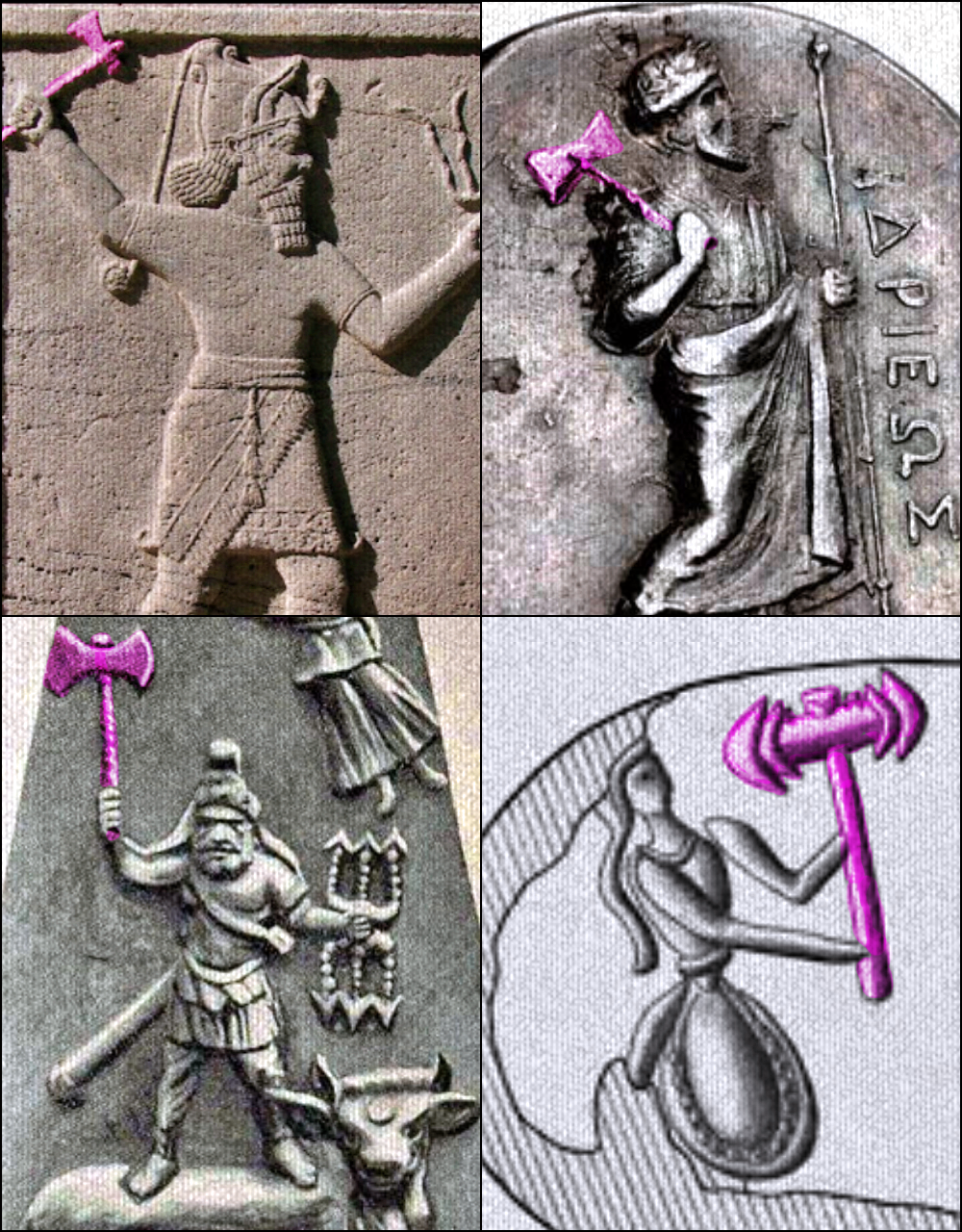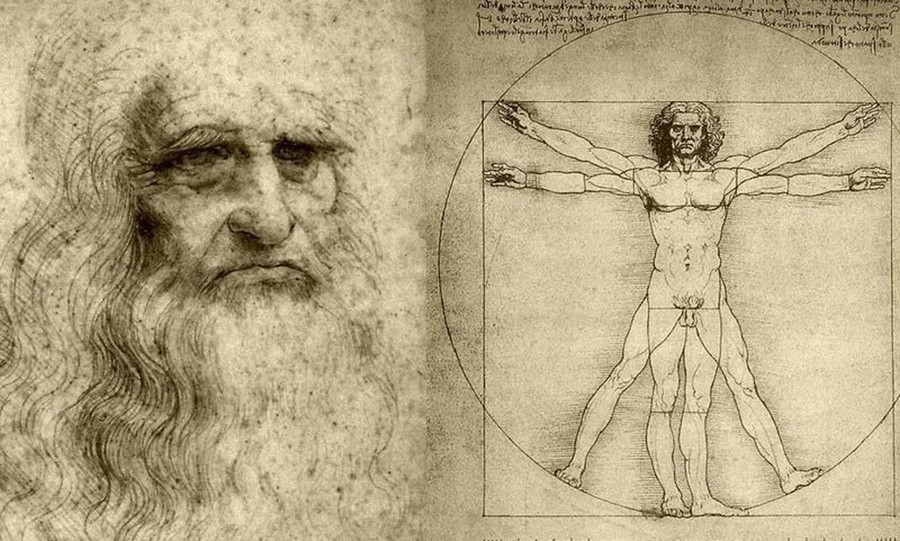Ancient Greek mythology and religion, often regarded as the cornerstones of classical antiquity, were not created in isolation. Instead, they were significantly influenced by and shared elements with other ancient cultures. This cultural exchange is evident in the similarities between Greek gods and their counterparts in other ancient civilizations, such as the Luwians, Hittites, Hurrians, and Egyptians. Examining these connections through gods like Apollo, Ares, Zeus, Aphrodite, Dionysus, and Hera reveals a rich tapestry of shared mythological traditions and the dynamic interactions that shaped ancient religious landscapes. These influences, visible through similarities in names and attributes, highlight the complex and interconnected nature of ancient mythologies.
Apollo (Appaliunas)
In Greek mythology, Apollo is one of the most revered and multifaceted deities, known as the god of the sun, music, healing, and prophecy, among other things. He embodies the ideal of the kouros, the beardless, athletic youth, and is often depicted with a lyre or bow. Apollo had a significant impact on many facets of Greek culture, including the arts, medicine, and the well-known Oracle at Delphi, where many people sought out his prophetic abilities. His duality as a god of both healing and plague illustrates the complex nature of divine power in Greek thought.
The Hittite and Lycian deity Appaliunas is believed to be an early form of Apollo, suggesting that his worship might have roots predating Greek civilization. Apaliunas appears in Hittite texts, indicating a shared or borrowed tradition of solar and healing deities.
Further cementing the Anatolian connection is Apollo's Homeric epithet Λυκηγενης, which translates to "born in Lycia." Lycia was a region in Anatolia, and this epithet offers a clear geographic link to Apollo's origins. The fact that such an epithet exists and is attached to Apollo underscores the weight of the argument that Apollo's veneration was brought to Greece from Anatolian traditions.
The connection between Apollo and Apaliunas underscores the cross-cultural exchanges in the ancient Near East. The etymology of "Apollo" in Greek is uncertain, but the similarity in names points to an interaction between Hittite and Greek religious practices. This blend of influences highlights how Greek mythology was not developed in isolation but was part of a broader tapestry of ancient mythological traditions.
Ares (IYARRI)
Ares, the Greek god of war, is known for his aggressive and tumultuous nature, embodying the brutal and chaotic aspects of warfare. Unlike his sister Athena, who represents strategic warfare and wisdom, Ares is associated with the raw violence and bloodlust of battle. He is often depicted as a fierce and fearsome figure, whose presence on the battlefield is both feared and loathed. Despite his prominent role in mythology, Ares was not widely worshipped and was often overshadowed by more favorable deities.
In Luwian mythology, Iyarri is a deity linked to warfare, sharing similarities with Ares. The resemblance in names suggests a possible cultural exchange or a shared origin. Although the Greek etymology of "Ares" remains uncertain, these parallels indicate a connection between the war gods of these ancient cultures. This overlap in martial deities reflects the interconnected nature of ancient religions and the transmission of mythological themes across regions. The depiction of war gods like Ares and Arey illustrates the universal human experience of conflict and the divine representation of martial prowess and strife.
Zeus (Dyeus, Tarhunna, and Teshub)
Zeus, the king of the Greek gods, is associated with the sky, thunder, and justice, ruling over Mount Olympus with his powerful thunderbolt. As the chief deity, he plays a central role in Greek mythology, upholding order and authority among both gods and mortals. His numerous affairs and offspring with various goddesses and mortal women signify his pervasive influence and the blending of divine and human realms.
The name "Zeus" is linked to the Proto-Indo-European deity Dyeus, the sky god, highlighting the shared linguistic and cultural heritage among Indo-European peoples. In the Hittite culture, the storm god Tarhunna (or Tarhunt) bears functional similarities to Zeus, although their names differ significantly. Tarhun, like Zeus, is a powerful deity associated with weather and sovereignty. The complex etymological path from Dyeus to Zeus reflects the intricate evolution of religious concepts and linguistic shifts over millennia. These connections underscore the deep-rooted and widespread nature of certain divine archetypes across ancient civilizations.
Aphrodite (Astart, Shaushka)
Aphrodite, the Greek goddess of love, beauty, and desire, is a central figure in Greek mythology, celebrated for her unparalleled charm and influence over both gods and mortals. She embodies the power of attraction and the complexities of romantic and sexual relationships. Aphrodite's origins are often traced to Near Eastern goddesses, reflecting the syncretic nature of ancient mythologies.
The goddess Aštart (Astarte) in the Levant and Shaushka in Hurrian and Hittite-Luwian cultures share many attributes with Aphrodite, particularly in their associations with fertility, love, and war. Shaushka, for instance, was revered as a deity of love and fertility, mirroring Aphrodite’s domain. The uncertain etymology of "Aphrodite" in Greek points to possible foreign influences, suggesting that her worship and attributes were shaped by a confluence of cultural interactions. These parallels highlight the fluidity and exchange of religious ideas across ancient civilizations, illustrating how deities could evolve and adapt to different cultural contexts.
Dionysus (osiris)
The connections between Dionysus and Osiris reveal profound commonalities in their mythological motifs, reflecting shared themes across Greek and Egyptian cultures. Both deities are associated with life, death, and rebirth, representing cycles of nature and human existence. Dionysus, the Greek god of wine, festivity, and ecstasy, is also linked to the concept of resurrection, as his myths often involve him being torn apart and reborn. This mirrors the story of Osiris, the Egyptian god of the afterlife, who is killed, dismembered, and ultimately resurrected by his wife, Isis.
Both Dionysus and Osiris are deeply connected to agricultural fertility and the cycles of growth and harvest. Dionysus is celebrated in rituals that emphasize the vine's life cycle, embodying the growth, death, and rebirth of vegetation. Similarly, Osiris is associated with the annual flooding of the Nile, which brings fertility to the land. His death and rebirth symbolize the flooding and retreating waters essential for crop growth. These agricultural associations underscore their roles as deities who ensure the sustenance and renewal of life.
The worship of Dionysus and Osiris also shares ritualistic elements that involve initiatory rites and mysteries. The Dionysian Mysteries and the Osirian rituals both include symbolic representations of death and rebirth, aimed at achieving spiritual enlightenment and eternal life. Initiates in these cults undergo symbolic deaths and rebirths, reflecting the gods' own mythological journeys. This shared motif of mystical initiation and the promise of an afterlife highlights the enduring human quest for understanding and transcending the boundaries of mortal existence through divine connection.
Herodotus, in his work "Histories," draws several parallels between the Greek god Dionysus and the Egyptian god Osiris. He notes that the rites and festivals associated with Dionysus in Greece bear a striking resemblance to those of Osiris in Egypt. Both deities are central figures in their respective mythologies, embodying themes of death and rebirth and being associated with the fertility of the land. Herodotus observed that the Egyptians believed their rituals honoring Osiris influenced the Greek celebrations of Dionysus, indicating a cultural exchange and shared religious motifs between the two civilizations.
Hera (Hebat, Isis, Arinniti, aset, Ashassarasmes, Ishassaramis, Ishara, and Ashera)
Hera, the queen of the Greek gods, is celebrated as the goddess of marriage, women, childbirth, and family. As the wife and sister of Zeus, Hera's mythology is marked by her protective and often vengeful nature, particularly towards Zeus's lovers and offspring. Her influence permeates various aspects of domestic life, making her a central figure in ensuring the sanctity and protection of marriage.
Comparable deities in other ancient cultures reflect similar attributes to Hera. Hebat, the queen of the gods in Hittite and Luwian traditions, and Arinniti, the Hittite sun goddess, both embody maternal and protective qualities akin to Hera's role. Additionally, the Luwian Ashassarasmes, Hittite Ishassaramis, Hurrian Ishara, and Hannanite Ashera all highlight the widespread motif of powerful maternal goddesses, showcasing the interconnectedness of religious traditions in the ancient Near East and Anatolia.
Išḫara on the Yazılıkaya reliefs, depicted between Allani and Nabarbi.
In Egyptian mythology, the goddesses Aset (Isis) and Hether (Hathor) parallel Hera’s domains. Isis’s protective nature and magical prowess, especially over her son Horus, and Hathor’s association with love, motherhood, and joy align with Hera's protective and nurturing roles. These cross-cultural parallels suggest that Hera's worship and attributes were shaped by a blend of indigenous Minoan and later Greek elements and broader Near Eastern and Anatolian influences, reflecting the rich tapestry of interconnected mythologies in the ancient Mediterranean world.
The study of ancient Greek gods in the context of their counterparts in other ancient civilizations underscores the interconnectedness of early religious and cultural traditions. Deities like Apollo, Ares, Zeus, Aphrodite, Dionysus, and Hera illustrate how Greek mythology was shaped by a confluence of indigenous elements and external influences from neighboring cultures such as the Hittites, Luwians, Hurrians, and Egyptians. This cross-cultural exchange enriched the Greek pantheon, embedding within it diverse attributes and narratives. Understanding these connections offers a deeper insight into the development of ancient religions and the shared human endeavor to explain the world through divine archetypes. This intricate web of interactions not only enriches our knowledge of Greek mythology but also highlights the universal themes and motifs that transcend individual cultures, reflecting the shared heritage of human civilization.














